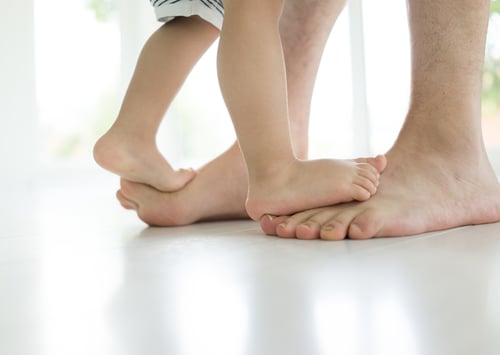
Pigeon-toed, or in-toeing, is a condition where a child's toes point inward while walking, running, or standing. While it may look concerning to parents, it's a common condition that often resolves on its own as a child grows.At Sweeney Foot & Ankle, we understand that every parent wants the best for their child's development. Here’s a comprehensive guide to help you understand pigeon-toed, its causes, treatments, and when you might need to seek professional help.
What Causes Pigeon-Toed in Children?
In-toeing can result from several factors, often depending on the child’s age and development stage. The primary causes include:
- Metatarsus Adductus: This is when the front half of the foot turns inward. It's common in infants and often noticed when the baby begins to walk.
- Tibial Torsion: This condition occurs when the shinbone (tibia) twists inward. It is often observed in toddlers who are learning to walk.
- Femoral Anteversion: This happens when the thighbone (femur) twists inward. It's usually seen in preschool and school-aged children and often becomes more noticeable around age 5 to 6.
How Is Pigeon-Toed Diagnosed?
At Sweeney Foot & Ankle, we diagnose pigeon-toed through a thorough physical examination and review of the child’s medical history. Our specialists may observe the child's walking pattern and perform specific tests to determine the cause and severity of in-toeing.
Treatment Options for Pigeon-Toed
In many cases, in-toeing doesn't require treatment and improves naturally as the child grows. However, some interventions might be necessary depending on the severity and underlying cause:
- Observation and Reassurance: Often, the best approach is to monitor the child's development. Most children outgrow in-toeing without any medical intervention.
- Physical Therapy: Exercises to strengthen muscles and improve coordination can be beneficial, especially if intoeing is caused by muscle weakness.
- Orthotic Devices: In some cases, custom orthotic devices or braces may be recommended to help guide the foot into a more natural position.
- Surgical Intervention: Rarely, surgery may be considered for severe cases of in-toeing that don't improve with other treatments. This is usually reserved for older children and adolescents.
When to Seek Help
While pigeon-toed often resolves on its own, there are situations where you should seek professional advice:
- Persistent In-toeing: If the condition does not improve as your child grows, or if it worsens, consult with a specialist.
- Pain or Discomfort: If your child experiences pain, discomfort, or difficulty walking, it’s essential to get a professional evaluation.
- Developmental Concerns: If you notice other developmental delays or abnormalities in your child's gait, a comprehensive assessment is recommended.
Supporting Your Child's Foot Health
At Sweeney Foot & Ankle, we are committed to ensuring your child’s foot health and overall well-being. Our team of experts is here to provide the best care, from diagnosis to treatment and ongoing support.
If you have concerns about your child's pigeon-toed condition or any other foot and ankle issues, don’t hesitate to contact us for an appointment. Together, we can ensure your child steps into a healthy future.
By understanding pigeon-toed and knowing when to seek professional advice, you can ensure that your child receives the best care and support for their developing feet. At Sweeney Foot & Ankle, we’re here to help every step of the way.






